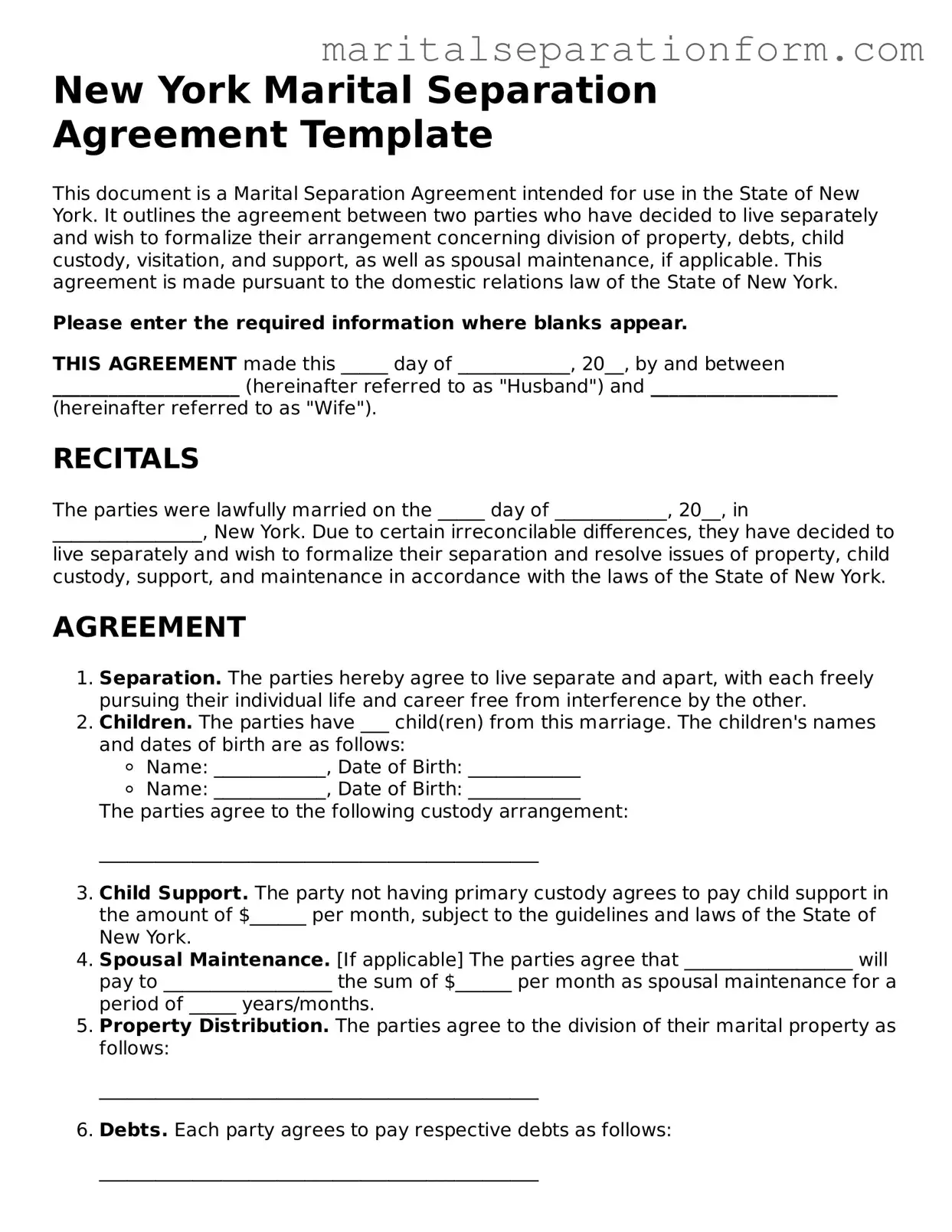New York Marital Separation Agreement Template
This document is a Marital Separation Agreement intended for use in the State of New York. It outlines the agreement between two parties who have decided to live separately and wish to formalize their arrangement concerning division of property, debts, child custody, visitation, and support, as well as spousal maintenance, if applicable. This agreement is made pursuant to the domestic relations law of the State of New York.
Please enter the required information where blanks appear.
THIS AGREEMENT made this _____ day of ____________, 20__, by and between ____________________ (hereinafter referred to as "Husband") and ____________________ (hereinafter referred to as "Wife").
RECITALS
The parties were lawfully married on the _____ day of ____________, 20__, in ________________, New York. Due to certain irreconcilable differences, they have decided to live separately and wish to formalize their separation and resolve issues of property, child custody, support, and maintenance in accordance with the laws of the State of New York.
AGREEMENT
- Separation. The parties hereby agree to live separate and apart, with each freely pursuing their individual life and career free from interference by the other.
- Children. The parties have ___ child(ren) from this marriage. The children's names and dates of birth are as follows:
- Name: ____________, Date of Birth: ____________
- Name: ____________, Date of Birth: ____________
The parties agree to the following custody arrangement:
_______________________________________________
- Child Support. The party not having primary custody agrees to pay child support in the amount of $______ per month, subject to the guidelines and laws of the State of New York.
- Spousal Maintenance. [If applicable] The parties agree that __________________ will pay to __________________ the sum of $______ per month as spousal maintenance for a period of _____ years/months.
- Property Distribution. The parties agree to the division of their marital property as follows:
_______________________________________________
- Debts. Each party agrees to pay respective debts as follows:
_______________________________________________
This Agreement constitutes the entire agreement between the parties and may only be amended in writing and signed by both parties. This Agreement shall be governed by the laws of the State of New York.
IN WITNESS WHEREOF, the parties have executed this agreement on the date first above written.
Husband's Signature: ___________________________________ Date: ____________
Wife's Signature: _____________________________________ Date: ____________
